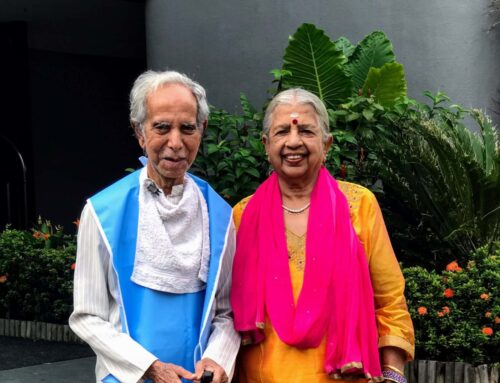Café Coffee Day, an Indian coffee chain, will offer serious competition to Starbucks, which aims to open 50 outlets by the end of the year. Aijaz Rahi / AP Photo
Feb 5, 2012
There is a great line in the movie When Harry met Sally, in which the hero differentiates women as “high-maintanence” or “low maintenance,” and proceeds to tell the heroine she is a “high-maintanence who thinks she is a low-maintanence”.
Coffee lovers in India are high-maintanence drinkers of the brew who think they are low-maintanence. I am typical. I come from Tamilnadu, the state that drinks the most coffee and live in a state, Karnataka, that produces 54.6 per cent of coffee in India, according to statistics from the Coffee Board of India. As with 70 per cent of Indians, I drink the bulk of my coffee at home: a ground mixture of Arabica and Robusta beans with 20 per cent of chicory mixed in. In south India, we call this filter coffee, and all we coffee drinkers ask for when we go out to a cafe is a cup of “decent coffee”.
Coffee lovers in India are high-maintanence drinkers of the brew who think they are low-maintanence. I am typical. I come from Tamilnadu, the state that drinks the most coffee and live in a state, Karnataka, that produces 54.6 per cent of coffee in India, according to statistics from the Coffee Board of India. As with 70 per cent of Indians, I drink the bulk of my coffee at home: a ground mixture of Arabica and Robusta beans with 20 per cent of chicory mixed in. In south India, we call this filter coffee, and all we coffee drinkers ask for when we go out to a cafe is a cup of “decent coffee”.
Therein lies the “slip ‘twixt the cup and the lip”, to quote an old English proverb that seems particularly appropriate for this topic.
“Decent” coffee for a committed south Indian coffee connoisseurs such as me involves a long, very specific list: it has to be piping hot; the foam must be on top; it has to be bubbly and the bubbles have to be breaking down; it should be served in a stainless-steel tumbler and “davara”, which is the Indian version of a saucer; the colour of the drink should not be as dark as cocoa, but not too milky either; and the amount of sugar should be just enough to take out the bitterness but without adding any sweetness to the taste. That’s what I would call decent coffee. You see why I think Indians are high-maintenance coffee drinkers who think they are low maintenance?
And here is why Starbucks should worry: there are millions like me in India.
Last week, Starbucks announced it would enter India through a US$80 million (Dh293.8m) joint venture with Tata Global Beverages. The chain had planned to come in on its own, but daunting regulations prevented the move. A recent ruling has allowed 100 per cent foreign ownership of single-brand retail outlets. Costa coffee has recently arrived in India and will be Starbucks’ biggest foreign competitor. Café Coffee Day (CCD), an Indian coffee chain, offers much more serious competition. With some 600 outlets in more than 95 cities, including Vienna and Karachi, CCD owns two thirds of all the chain coffee houses in India, by some estimates. It is ubiquitous at airports and malls and has stand-alone outlets in most neighbourhoods. Yet, in terms of outlets per person, its market penetration is one forty-fourth that of Starbucks, according to the Espresso News & Reviews website.
Starbucks hopes to change that. It hopes to convert tea-drinking north India into a nation of coffee-drinkers. RK Krishnakumar, the chairman of Tata Coffee, said the company planned to move aggressively and could have 50 stores by the end of this year. Brand consultants caution Starbucks should not assume that just because it is a well-known global brand, it can just walk into India and attract customers. Part of the problem is just the differential pricing of coffee in India. My dad drinks four cups of coffee a day and pay 10 rupees (75 fils) per cup at his neighbourhood, no-name café. I pay 35 rupees for a cup of espresso at Café Coffee Day. It still costs under a dollar for the most expensive cup of coffee in India. How is Starbucks going to get price-conscious Indian consumers who think they are coffee experts to pay US$4 (Dh14) for a tall latte?
The company’s biggest outlay will be on property.
Santosh Unni, the chief executive of Costa Coffee India, has said the consideration for a coffee chain is not so much about rent per square metre but to keep the “rent-to-revenue percentage in the ballpark of 25 per cent”.
Café Coffee Day has used it first-mover advantage to set up outlets in every premium location imaginable, from the hills of Coonoor where Bangalore millionaires go in the summer, to motorways and urban malls, with extremely high footfalls. Starbucks needs to think through its strategy for India quite significantly so that its failure in Israel is not replicated.
Lastly, it needs to figure out what the Indian consumer means when they say, “All I want is a simple cup of decent coffee.”





Leave A Comment